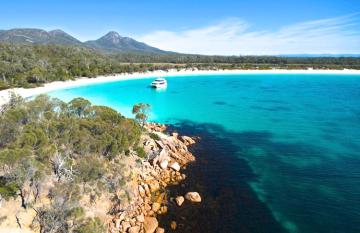
Wanting to know the best time to visit Cradle Mountain in Tasmania? Find everything you need to know about different seasons and year-round activities at Cradle Mountain in this blog.
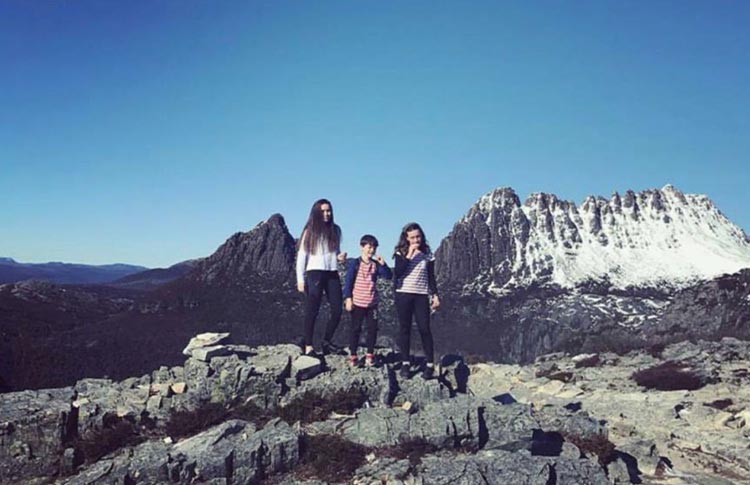
Contents
Best Time to Visit Cradle Mountain
Cradle Mountain is a fabulous place to put on any Tasmanian itinerary, no matter what time of year you plan on going.
Still, depending on what you want to see and do while visiting Cradle Mountain, some times of year can be better than others. Here’s all the information you need to know about planning the best time to visit Cradle Mountain.
When is the best time of year to visit Cradle Mountain?
The answer to this question depends heavily on what your ideal Cradle Mountain vacation or holiday might look like: does it involve sparkling night skies and majestic snowy landscapes, or seeing the scenery change colour and the waterfalls start to fill? How about long sunny days and refreshing swim sessions? Is it an active adventure you’re after, or fine dining? Do you want to be alone in the wilderness, or get out and about and share this landscape with other visitors and/or Tasmania’s local wildlife?
To help you get a clearer idea of the best time to visit Cradle Mountain with this in mind, here is a rundown on what to expect at Cradle Mountain in each season of the year:
Visiting Cradle Mountain in Spring (Sep-Nov)
Weather Conditions
Things warm up quickly in Cradle Mountain during springtime: average daily highs around 5°C in early September reach 12°C by late November. Early spring is still often wet and rainy, but this also drops off considerably by November, with rain becoming more patchy.
What to do at Cradle Mountain in Spring:
See stunning waterfalls
Coming out of the rainiest season of the year – combined with winter snowmelt and with plenty of rainfall still hanging around – Spring is a fantastic time to see Cradle Mountain’s waterfalls and cascades at their best. Whether you’re brave enough to take a plunge in the swimming holes or not, with temperatures still ramping up towards peak summer, there are a number of waterfalls accessible by short walks from Cradle Mountain village.
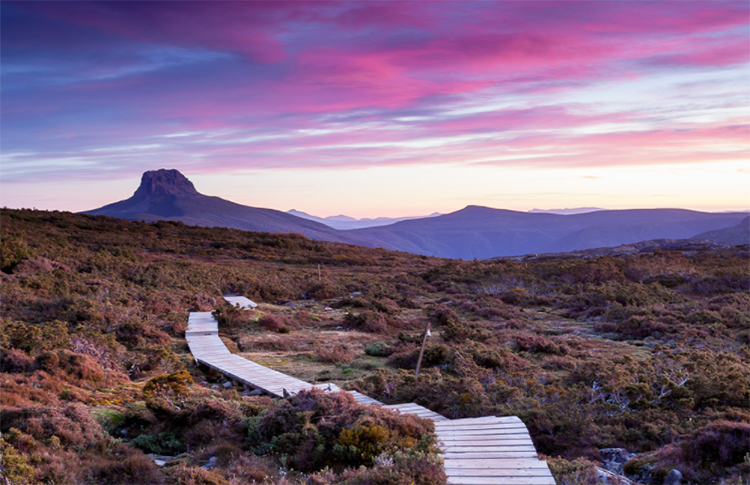
Meet Cradle Mountain’s wildlife
Another advantage of being in Cradle Mountain during spring is that this is the best time to see some of Cradle Mountain’s native wildlife at their most active. Whether hungry echidnas emerging from their winter slumber to forage and feed, or cheeky joeys (baby wallabies) bouncing around, many of Tasmania’s most beloved natural creatures are at their most active and entertaining during springtime.
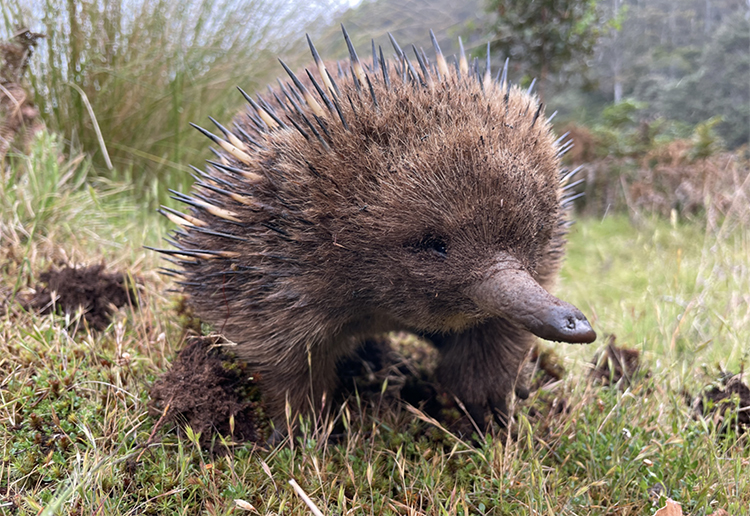
Visiting Cradle Mountain in Summer (Dec-Feb)
Weather Conditions
Summer is the warmest and driest period of the year at Cradle Mountain, peaking in February with average daily highs of 15°C and fewer rainy days (8) than any other month of the year.
What to do at Cradle Mountain in Summer:
Enjoy the great outdoors
The world (of Cradle Mountain) is your oyster during the long, warm summer months. Cradle Mountain’s world-famous hiking trails are at their busiest, with people taking advantage of longer daylight hours and the alpine summer temperatures being more mild than elsewhere in Tasmania (and the rest of Australia).
Take a plunge or take on a challenge
The longer, warmer days also mean that swimming is possible in the alpine lakes, providing the perfect natural remedy for tired muscles. There are plenty of opportunities for canoeing, kayaking, canyoning, and other outdoor adventure sports, too. Although the summer weather is dry and warm compared with other times of year, it can still be changeable in the mountains – unexpected summer snowfalls have occurred occasionally – so make sure you’re always equipped and prepared.
Visiting Cradle Mountain in Autumn/Fall (Mar-May)
Weather Conditions
There are still plenty of warm, dry days across the month of March. Rainfall gradually increases throughout April and May, while temperatures steadily drop from average highs around 13°C, in early March, to nightly lows around freezing (0°C) by the end of May.
What to do at Cradle Mountain in Autumn/Fall:
Have a trail to yourself
Following the peak heat of summer, autumn has cooler, more moderate temperatures and is potentially the best time for taking on some of Cradle Mountain’s many fantastic walking and hiking trails. You can still expect around 20 dry days in the month of March, as well as some beautiful changing colours to add a touch of magic to the landscape. Crowds are generally much smaller than during summer, too, meaning you can have many Cradle Mountain trails and panoramic viewpoints to yourself.
See stunning scenery change colour
The major highlight of a trip to Cradle Mountain during Autumn, though, is the chance to see the spectacular Tasmanian Fagus tree (and the entire landscape) change colour: one of Australia’s very few deciduous species, the Fagus is an ancient Gondwanan relic whose distinctive crinkle-cut leaves turn from green to brilliant gold to burnt copper to orange.
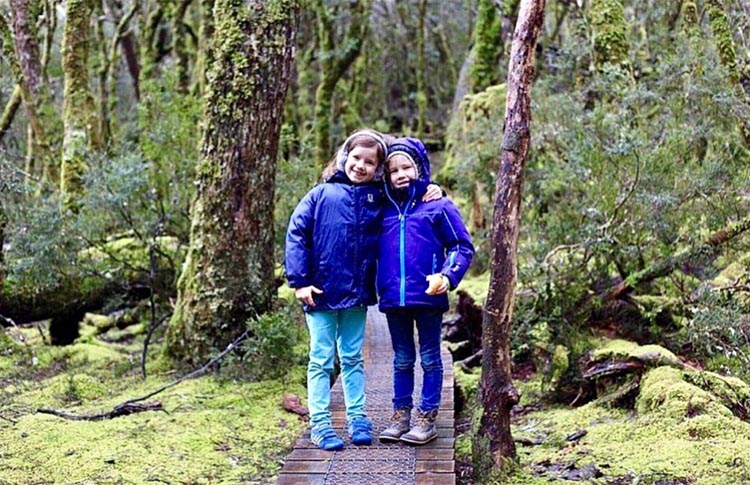
Visiting Cradle Mountain in Winter (Jun-Aug)
Weather Conditions
Winter is the wettest season in Cradle Mountain, with July and August having more rain and/or snow than any other months of the year. It also gets much colder, with average daily highs of 5°C and nightly lows of -2°C between June-August.
What to do at Cradle Mountain in Winter:
Walk in winter wonderlands
Winter arguably provides an opportunity to see Cradle Mountain’s wild landscapes at their most majestic and breathtaking – draped in pure white snow – so don’t forget your camera! Winter can be a difficult time for inexperienced hikers doing Cradle Mountain’s higher peaks and longer trails, but it’s a fabulous time to enjoy some of the shorter, lower trails near the Visitor Centre and park entrance. These trails can get you right up close and personal to stunning sites like King Billy Pines forest, Dove Lake, Knyvet Falls, and Pencil Pine Cascades.
Drink, dine, relax
After your walk, cosy up with a local wine or whisky in front of the fireplace at one of Cradle Mountain’s hotels, cottages and lodges; or join in the annual local mid-winter “Christmas” dinner held at the Cradle Mountain Hotel each July. Another great winter activity is lounging in a hot tub at one of Cradle Mountain’s several spas, soaking in therapeutic waters while soaking up the gorgeous, snow-draped scenery.
Plan your trip to Cradle Mountain now
Whatever time of year you’re planning your visit to Tasmania and Cradle Mountain, you’ll find a treasure trove of information to help you plan your trip on First Light Travel’s dedicated Tasmania travel blog. They have a number of self-drive Tasmania itinerary options that take in Cradle Mountain.
Contact FLT’s Tasmania travel experts directly and plan your own customised itinerary.
Recent Posts
Blog Categories
Blog archives
- March 2025 (1)
- November 2024 (1)
- October 2024 (1)
- September 2024 (8)
- June 2024 (4)
- May 2024 (2)
- April 2024 (2)
- March 2024 (13)
- February 2024 (3)
- January 2024 (5)
- December 2023 (6)
- November 2023 (4)
- October 2023 (11)
- September 2023 (2)
- August 2023 (6)
- July 2023 (2)
- June 2023 (17)
- May 2023 (3)
- April 2023 (5)
- March 2023 (8)
- February 2023 (9)
- January 2023 (12)
- December 2022 (9)
- November 2022 (12)
- October 2022 (12)
- September 2022 (12)
- August 2022 (6)
- July 2022 (9)
- June 2022 (7)
- May 2022 (3)
- April 2022 (4)
- March 2022 (6)
- February 2022 (1)
- January 2022 (4)
- December 2021 (2)
- November 2021 (3)
- October 2021 (1)
- September 2021 (4)
- August 2021 (10)
- July 2021 (13)
- June 2021 (6)
- April 2021 (2)
- March 2021 (2)
- February 2021 (1)
- January 2021 (1)
- December 2020 (2)
- November 2020 (3)
- October 2020 (2)
- September 2020 (1)
- August 2020 (1)
- July 2020 (1)
- June 2020 (1)
- May 2020 (1)
- March 2020 (1)
- February 2020 (2)
- January 2020 (4)
- December 2019 (2)
- November 2019 (1)
- October 2019 (1)
- September 2019 (5)
- August 2019 (1)
- July 2019 (5)
- June 2019 (1)
- May 2019 (1)
- April 2019 (1)
- March 2019 (1)
- February 2019 (1)
- January 2019 (1)
- December 2018 (1)
- October 2018 (1)
- May 2018 (1)
- February 2018 (1)
- December 2017 (1)
- October 2017 (1)
- June 2017 (1)
- May 2017 (1)
- February 2017 (1)
- January 2017 (1)
- September 2016 (1)
- August 2016 (2)
- July 2016 (1)
- June 2016 (1)
- May 2016 (1)
- April 2016 (1)
- December 2015 (1)




